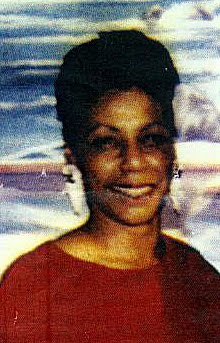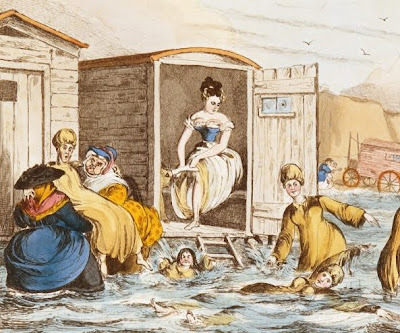
There was a time in my life when I thought I wanted to be a "purist" in my cooking. By that I don't mean I wanted to go out and grab eggs from under the mother hen -- or head out to the rice paddy to reap something that I'd sown. But I did think that to be a really good cook I should not look to cans any more than I had to. I was willing to shell the peas, de-string the green beans, make the biscuits from flour instead of Bisquick, and use fresh herbs instead of dried ones. By and large things were tastier, and as I was in a new marriage and really wanted to do things right this time, I was willing to take whatever time was called for to make things perfect.
My mother was not a good cook, nor an adventuresome cook. I was seriously underexposed to good food from her cooking - salads were either jello or lettuce and tomato; salad dressing was always Miracle Whip; meat was cooked until it had a consistency of shoe leather. Potatoes were boiled, spaghetti was out of Franco-American cans. Mother did not like to eat nor cook, and until I left for college in 1953, I had never tasted a pizza, seen a bagel, or eaten a rare steak. When I married the first time, my cuisine was limited by finicky children whose preferences ran to hamburger patties. By 1975 and in a new marriage, I decided this was a second chance. Dating as an adult had opened my taste buds to all kinds of culinary experiences and I figured I was smart enough to learn to cook the right way. Armed with books from James Beard, Julia Child, Bert Greene, etc. I started experimenting.
In 1980 Jer and I went to Israel. In our week there I decided I wanted to bring home two souveniers - a piece of art and a cookbook of Israeli recipes (but written in English, of course.) I found exactly what I wanted: a great silkscreen of Moses crossing the Red Sea, and a spiral bound cookbook of everyday Israeli food. What caught my eye in the cookbook is that there was a recipe in there for Hummus that listed the first ingredient as "2
cans of chickpeas."
Going back to the purist idea, I had earlier learned that Hummus was a wonderful appetizer, and I always made it the old fashioned way, soaking the dried chickpeas overnight and cooking them the next day. They had to cook for a long time, and when finished I had to make sure to remove all the little "skins" that covered them. This was a long ordeal. Some of the skins had come off in the cooking but I had to make sure, pea by pea, that no skins remained. Believe me, it was a long, tedious process. But I wanted to make the Hummus the right way, and the right way, I thought, was to do what the instructions said - and removing the skins was a must.
So when I saw in that Israeli cookbook that the people there used CANNED CHICKPEAS I was stunned. Once I got home, I tried it -- and to be honest with you, the Hummus tasted every bit as good as doing it the purist way. From that day forward, I have always used my authentic Israeli recipe from that little book and I've probably been asked for my Hummus recipe more than anything else I've ever cooked.
So here is how to do it the easy way, folks. If you like Hummus, you'll love this recipe. If you don't know what Hummus is, try it out, because it is simply too good to pass up.
HUMMUS
2 1# cans garbanzo beans, drained
5 T fresh lemon juice
6 T olive oil
1 t garlic powder
1 t salt
¼ t pepper
¼ t paprika
Dash cayenne pepper (optional)
1/3 c Tahina paste [usually found at all big supermarkets in international food section]
10 springs parsley.
Reserve 2 T beans for garnish. Process beans in food processor until smooth. Mix in the lemon juice and olive oil, one tablespoon at a time, starting with the Olive Oil, processing well after each addition. Add garlic powder, salt, pepper, paprika and cayenne, processing well to mix. Finally add the tahina, processing well. To serve place on flat plate and smooth out with back of spoon. Garnish with the remaining whole beans in the center, a drizzle of olive oil, a sprinkle of red paprika and a few sprigs of parsley. May also be put on individual salad plates.
Serve at room temperature.


 For some reason, March seems to be a good month for funny studies. Last year in March the newspapers reported on a study titled, “The Spatial Distribution of the Seven Deadly Sins Within Nevada,” the Seven Deadly sins being lust, gluttony, greed, sloth, wrath, envy and pride. (Lest you look in the good book for them, they aren’t there named in that order but a quick read of Proverbs 6 will give you more sins than you are probably interested in knowing about). At any rate, this study was done by some Kansas State University geographers to show how quantified information could be mapped. And the information was not the issue; the mapping of the ridiculous data was.
For some reason, March seems to be a good month for funny studies. Last year in March the newspapers reported on a study titled, “The Spatial Distribution of the Seven Deadly Sins Within Nevada,” the Seven Deadly sins being lust, gluttony, greed, sloth, wrath, envy and pride. (Lest you look in the good book for them, they aren’t there named in that order but a quick read of Proverbs 6 will give you more sins than you are probably interested in knowing about). At any rate, this study was done by some Kansas State University geographers to show how quantified information could be mapped. And the information was not the issue; the mapping of the ridiculous data was. This month the L. A. Times has given us another funny study. Two brothers, one a director at a university food and brand lab and the other a biblical scholar, have analyzed 52 depictions of the “Last Supper” in a quest to see if over the years the food portions served at the last supper had actually increased.
This month the L. A. Times has given us another funny study. Two brothers, one a director at a university food and brand lab and the other a biblical scholar, have analyzed 52 depictions of the “Last Supper” in a quest to see if over the years the food portions served at the last supper had actually increased. My old college statistics professor always made sure we understood that statistics could be manipulated to give us the results that we wanted, but we certainly never had such fun playing with them as these folks have.
My old college statistics professor always made sure we understood that statistics could be manipulated to give us the results that we wanted, but we certainly never had such fun playing with them as these folks have.



 As the years went on, the bathing machine evolved to a higher level and some of the machines were pulled in and out by cables propelled by a steam engine.
As the years went on, the bathing machine evolved to a higher level and some of the machines were pulled in and out by cables propelled by a steam engine.

 The potted pea plants are trying to grow, but they are gasping for air/soil/space. The baskets are right outside by office window and as I sit at the computer I can see -- and hear -- them. "AIR. SUN. SPACE." they moan. They do not look healthy at all. But I can't give up yet.
The potted pea plants are trying to grow, but they are gasping for air/soil/space. The baskets are right outside by office window and as I sit at the computer I can see -- and hear -- them. "AIR. SUN. SPACE." they moan. They do not look healthy at all. But I can't give up yet.












